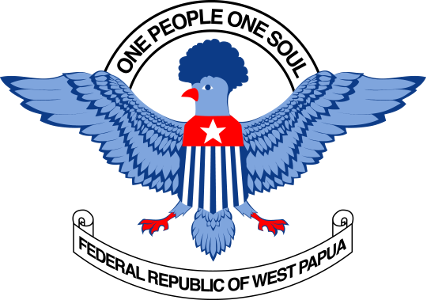
Gunner Lloyd Moore of Dubbo with a Timor Pony foal, Merauke, April 1944 (from ‘Scarlett and the Village Maiden Handicap’, Australian War Memorial).
On 10 December 2017, the West Papua Womens Office in Docklands launched its exhibition World War II in West Papua, 1942-1945 at the Australian Catholic University Art Gallery in Brunswick St Fitzroy.
Former ABC journalist Margaret Coffey compèred an impressive lineup of speakers that included Jacob Rumbiak from the Federal Republic of West Papua, Ross Himona (ret.) from the New Zealand Army, and Lance Collins (ret.) from the Australian Defence Force.
Ross Himona’s comprehensive slide-show illustrated the exhibition in its real-world context, drawing on military records, recently declassified intelligence documents, and Allied commanders’ accounts.
Below are two PDFs of his slideshow (one of 39 slides, the other with more maps of 48 slides) which are well worth reading.
[click to read/download] West Papua in WW2, Ross Himona, Introduction to 2017 Exhibition, 1
[click to read/download] West Papua in WW2, Ross Himona, Introduction to 2017 Exhibition, 2
The exhibition itself cracked the cone of silence that has existed around the war in what-was-then Dutch Nieuw Guinea, especially the devastation heaped upon the West Papuans and their land. As importantly it illustrates how the people, after being suddenly and overwhelmed by Japanese Navy, Air and Land forces, rallied to the Allied cause. In the central highlands, the Oaktree intelligence team (including two Papuan women) traced the Japanese for eleven months, its reports ending up in the Allied Intelligence Bureau in Melbourne. Further north, the Mandatjan Brothers, working the Arfak tribal lands, were parachuted hundreds of guns by General MacArthur’s taskforce; and in 1944 formed the core of the PVK military force of four hundred West Papuans assigned with ‘mopping up’ operations.
US General Eichelberger’s arresting account of the Allies occupation of Hollandia (current-day Jayapura) is but one small measure of the impact of the war and weight of foreign footprints:
Hollandia, converted into an immense military and air base, became one of the great bases of the war. Sides of mountains were carved away, bridges and culverts were thrown across rivers and creeks, gravel and stone were poured into sago swamps to make highways as tall as Mississippi levees. Tremendous docks were constructed; 135 miles of pipeline led over the hills to feed gasoline to the airfields. Where I had seen a few native villages and an expanse of primeval forest, a city of 140,000 men took occupancy (Robert L. Eichelberger ‘Our Jungle Road to Tokyo’, Battery Classics, Tennessee 1950)
The full exhibition is currently being prepared for website-view.
